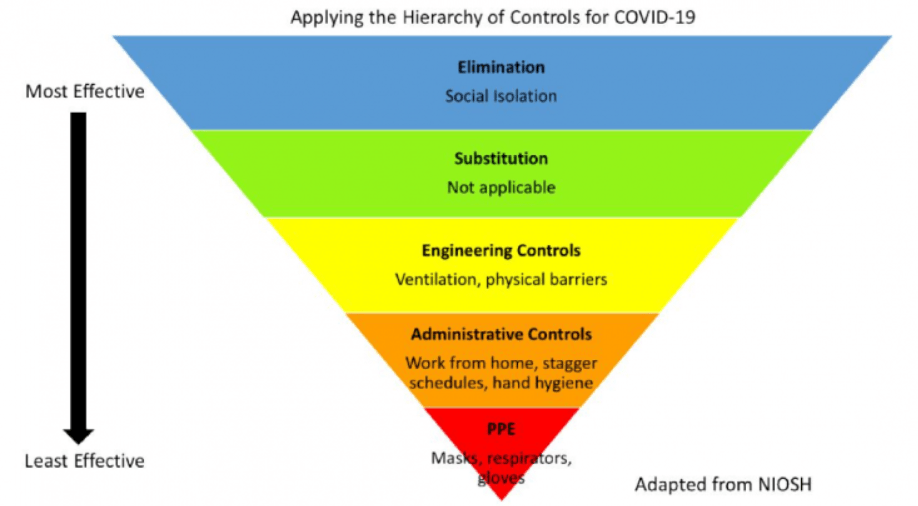The New South Wales, Queensland and Western Australian Governments recently announced plans to slowly wind back social distancing restrictions from late April 2020 and early May 2020. The Victorian Government has indicated it won’t take similar steps until it is certain that there is no undetected community transmission.
The Prime Minister is urging schools to re-open and has recently indicated that Australia is ‘not too far away’ from easing coronavirus restrictions. And, he says, the COVIDSafe app is the ‘ticket’ to ending COVID-19 (but that’s a discussion for another time).
What does this mean for workers returning to workplaces where the COVID-19 risks in the community remain?
The official position, it appears, is that Australians should continue to work from home unless you can’t work remotely. There are many industries which have been ‘identified’ as essential, such as health, aged care, education, construction and supermarkets. Those workers have continued working from their workplaces because working from home is simply not an option or their services are essential (eg the supply of toilet paper). There are many other workplaces who have implemented unique hybrid arrangements which have included partial working from the workplace location and partly from home. Others have their workforces working productively from home.
Let’s face it: For many of us who have been working from home, we are itching to get back to the workplace (even if it’s just so we can attend Friday afternoon drinks).
As the COVID-19 curve hopefully continues to flatten, and as restrictions are hopefully eased, we need to think about how we are going to transition our workforces back into the workplace.
Here are some things to think about when transitioning part or all of your workforce back into the workplace:
| Managing Workspaces | |
| 1 | What physical and psychological risks need to be assessed? |
| 2 | Are the controls you have identified reasonably practicable and in accordance with the hierarchy of controls? See below the Department of Health’s guide to the Hierarchy of Controls. |
| 3 | How have you consulted with your workers about the risks and the controls? |
| 4 | What are the arrangements for returning staff? For example, will staff return to work full-time, part-time, or according to split or staggered shifts? If so, for how long? |
| 5 | What will social distancing look like upon their return and what, if any, modifications need to be made to the workplace layout to meet the distancing requirements? |
| 6 | How do you stay at least 1.5 meters apart, whilst at the same time having 4 square meters of space per person? (yes, you are supposed to do both). |
| 7 | Will social distancing mean that work tasks need to be done in a different area or a different way? |
| 8 | For staff who may continue to work from home, how are you checking that they are following safe working procedures and have they completed a checklist relevant to their work? |
| 9 | What processes are you going to implement for contractors, customers and other third parties, eg delivery drivers? |
| 10 | Will you continue to use electronic communications, such as Zoom and Teams? |
| Staying Healthy | |
| 1 | How will you continue to maintain the use of hygiene measures, eg hand sanitizer and disinfectant wipes? |
| 2 | What information and reminders will you provide about the hygiene measures, eg posters on how to stay hygienic? |
| 3 | How often will you clean your workplace? |
| 4 | Who will clean the workplace? |
| 5 | How can you be satisfied that the cleaning is thorough and regular? |
| 6 | How are you going to keep frequently touched areas and surfaces clean and at what intervals will they be cleaned? |
| 7 | How will you make sure that workers understand they need to stay home if they are unwell? |
| 8 | If someone is showing symptoms at work (including cold, flu or other respiratory problems), what will you do with them? |
| 9 | What amenities do you have to quarantine sick workers and how will you ensure that they are clean after an affected worker has used them? |
| Be Informed and Prepared | |
| 1 | How are you going to keep up to date with Federal and State health authorities’ COVID-19 information and guidance and communicate this information to your staff? |
| 2 | Does your Pandemic Plan need to be reviewed and will it be sufficient in the event of a COVID-19 outbreak at the workplace? |
| 3 | Do you have sufficient and appropriate cleaning products and PPE available on site to deal with an outbreak? |
| 4 | Do you have a continuity plan to keep your business on track? |
| 5 | How will you keep the lines of communication open with your workforce to address any COVID-19 concerns they have? |
| 6 | What steps do you take if your staff or other persons at your workplace do not follow the procedures of policies you have implemented to reduce COVID-19 risks? |
There may be more things to think about that are specific to your business.
As to exactly when back-to-workplace transitioning occurs, that is anyone’s guess (stay tuned to the Chief Medical Officer). However, these issues can’t be considered and implemented overnight. Your business will need to plan for getting everyone back safely.
Please stay in touch with the current advice from the health authorities.

Source: Department of Health
John Makris
Partner
+61 2 9169 8401
[email protected]
